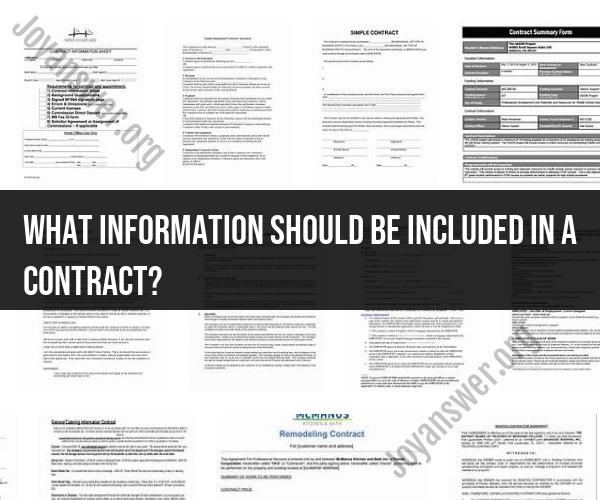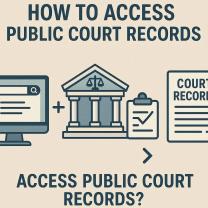What information should be included in a contract?
Creating a well-drafted contract requires careful consideration of the essential information it should contain. This article outlines the key elements that should be included in contracts to ensure clarity, enforceability, and protection of all parties involved.
Introduction to Essential Contract Information
A contract serves as a legally binding agreement between parties, outlining their rights, obligations, and expectations. Including essential information in a contract is vital to prevent misunderstandings, disputes, and potential legal issues.
Key Elements to Include in Contracts
1. Parties Involved
Clearly identify the parties entering the contract. Include their legal names, addresses, and any relevant details that establish their identities.
2. Contract Date
Specify the date on which the contract is executed. This is important for determining when the terms and obligations outlined in the contract come into effect.
3. Scope and Purpose
Define the scope of the contract and its purpose. Clearly outline what each party is expected to do or provide under the contract.
4. Terms and Conditions
Detail the terms and conditions that both parties must adhere to. This includes obligations, responsibilities, payment terms, delivery schedules, and any other relevant requirements.
5. Consideration
State what each party will receive in exchange for fulfilling their obligations. Consideration can be monetary payments, goods, services, or anything else agreed upon.
6. Confidentiality and Non-Disclosure
If applicable, include clauses related to confidentiality and non-disclosure to protect sensitive information shared between parties during the course of the contract.
7. Termination and Renewal
Specify the conditions under which the contract can be terminated by either party. Additionally, include any provisions for renewal or extension of the contract.
8. Dispute Resolution
Outline the process for resolving disputes that may arise between the parties. This can include negotiation, mediation, or arbitration procedures.
9. Governing Law and Jurisdiction
Indicate the governing law that will apply to the contract and the jurisdiction where any legal actions related to the contract will be resolved.
10. Signatures and Execution
Ensure that the contract is signed by all parties involved. Signatures validate the agreement and demonstrate the parties' consent to the terms.
Benefits of Including Essential Information
By including the essential information in contracts, parties can:
1. Minimize Ambiguity
Clear and specific contract terms minimize misunderstandings and potential disputes.
2. Enhance Enforceability
A well-drafted contract is more likely to be enforceable in court should disputes arise.
3. Establish Expectations
Clearly outlined obligations and expectations help parties understand their roles and responsibilities.
Conclusion
Including essential information in contracts is crucial for establishing clear and enforceable agreements. By addressing key elements such as parties involved, terms and conditions, termination clauses, and more, contracts become effective tools for ensuring successful business relationships and minimizing legal risks.












